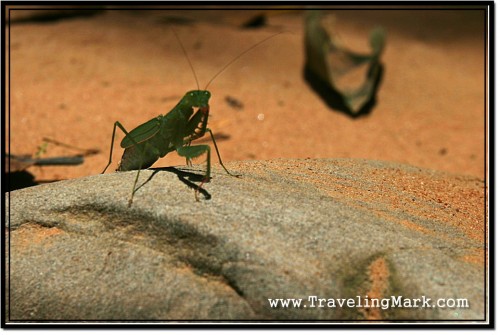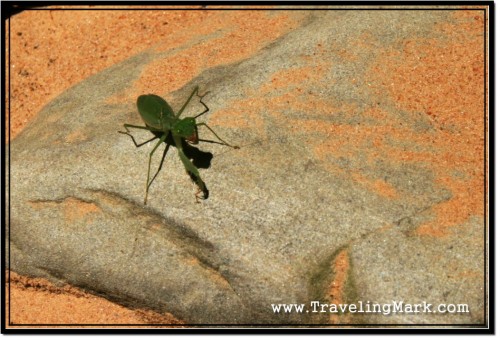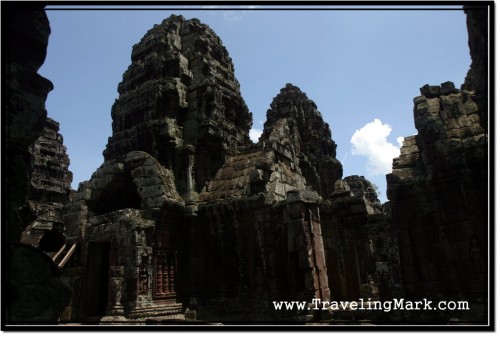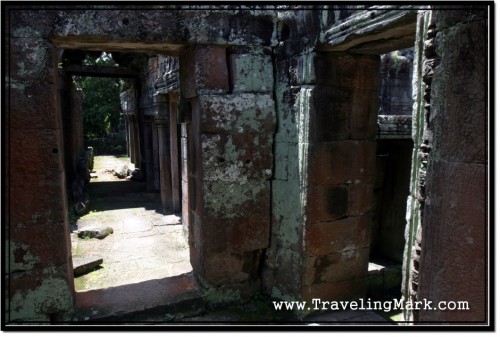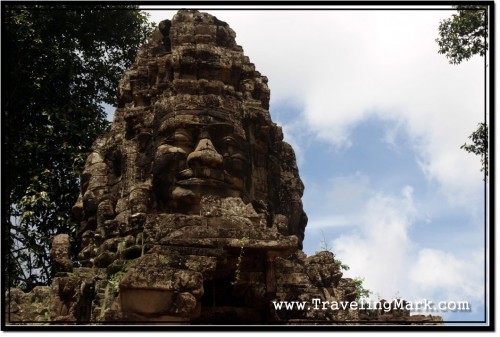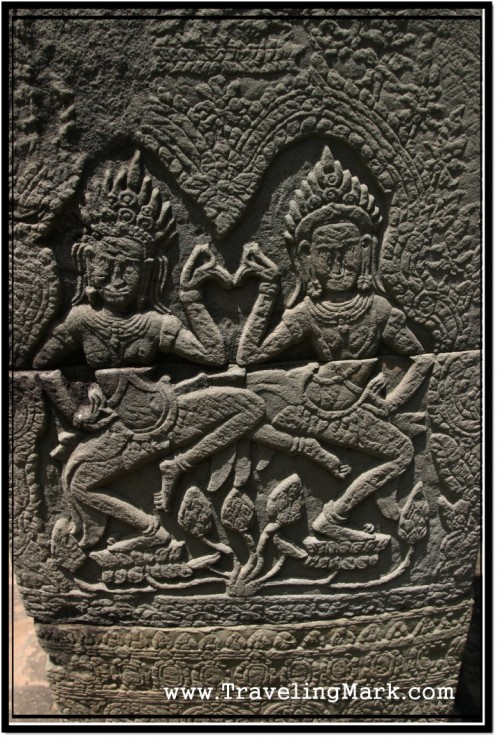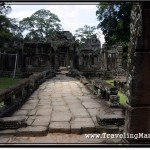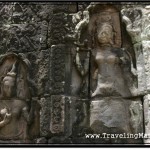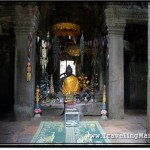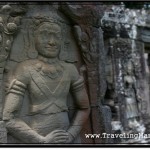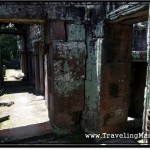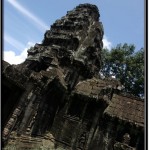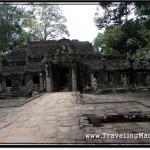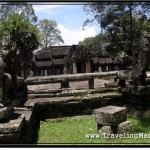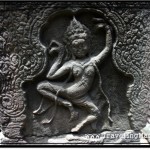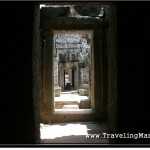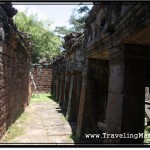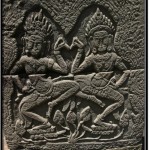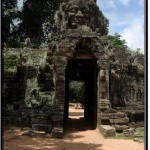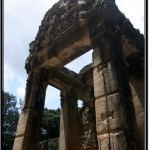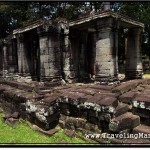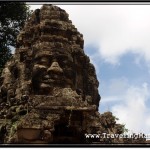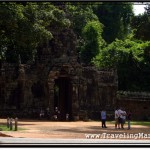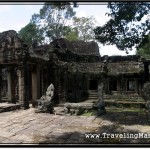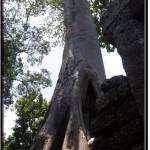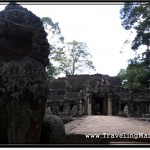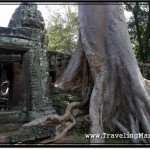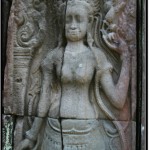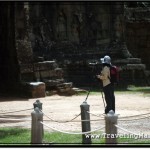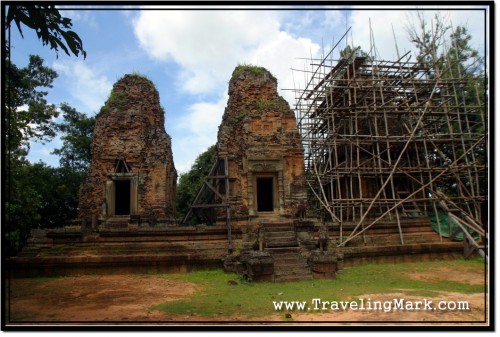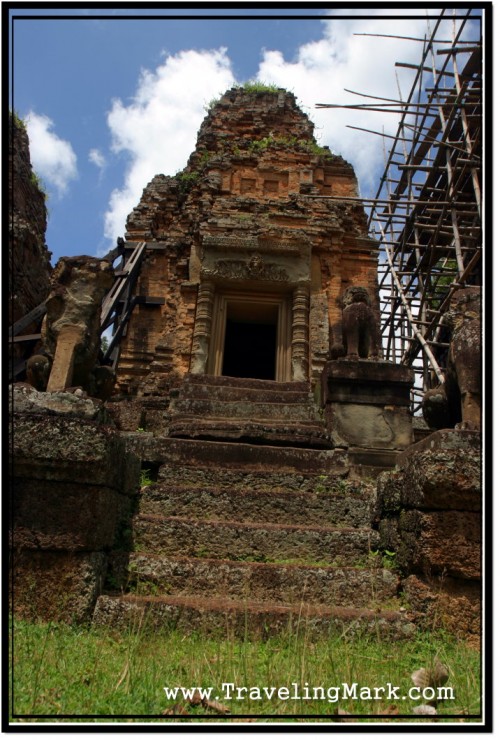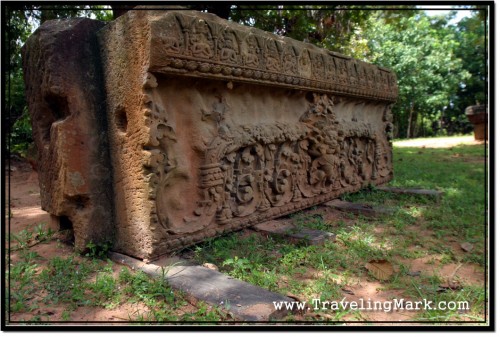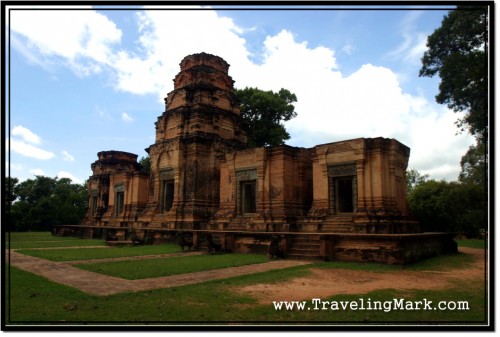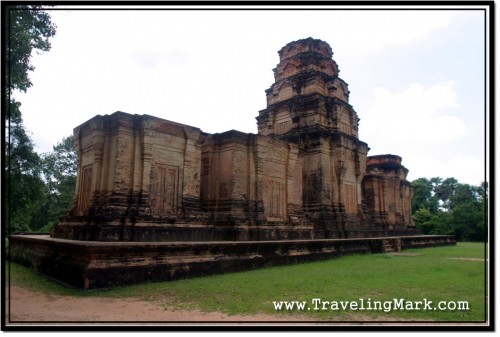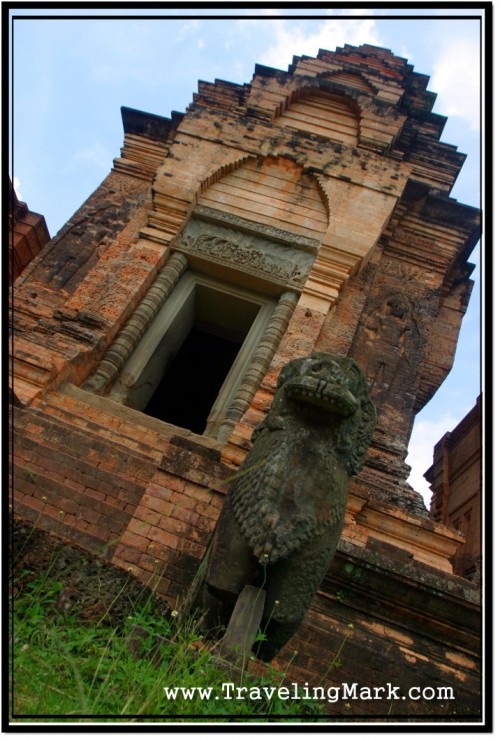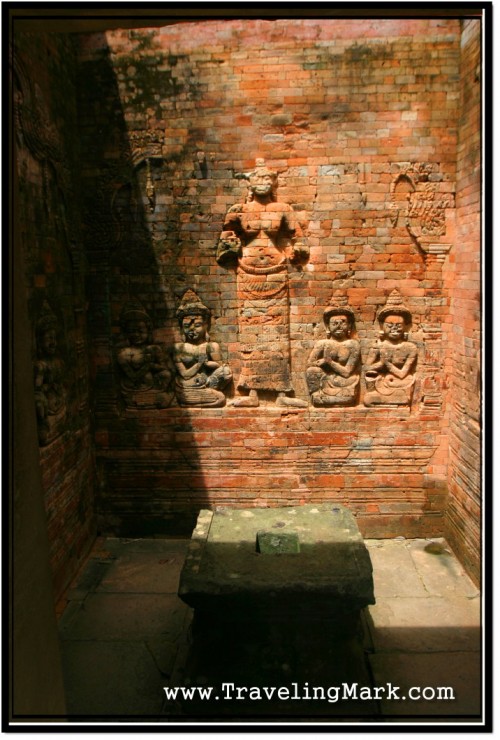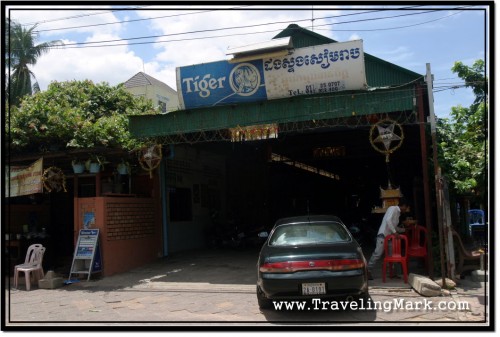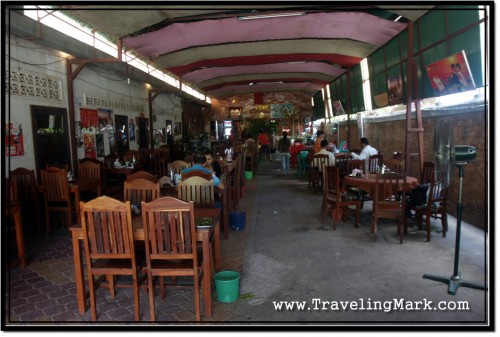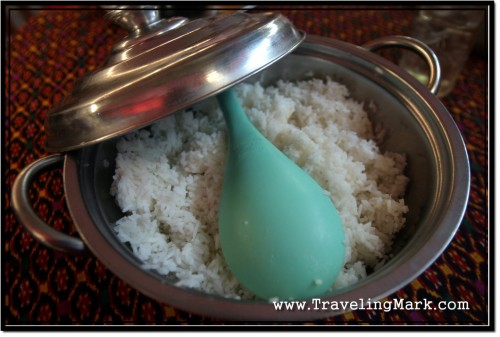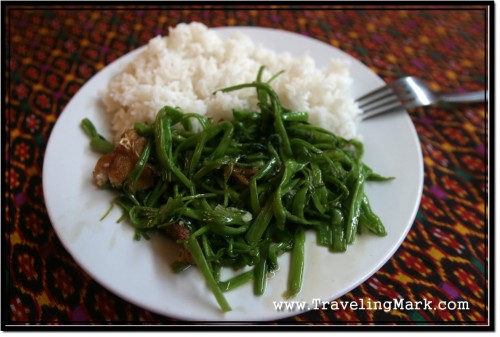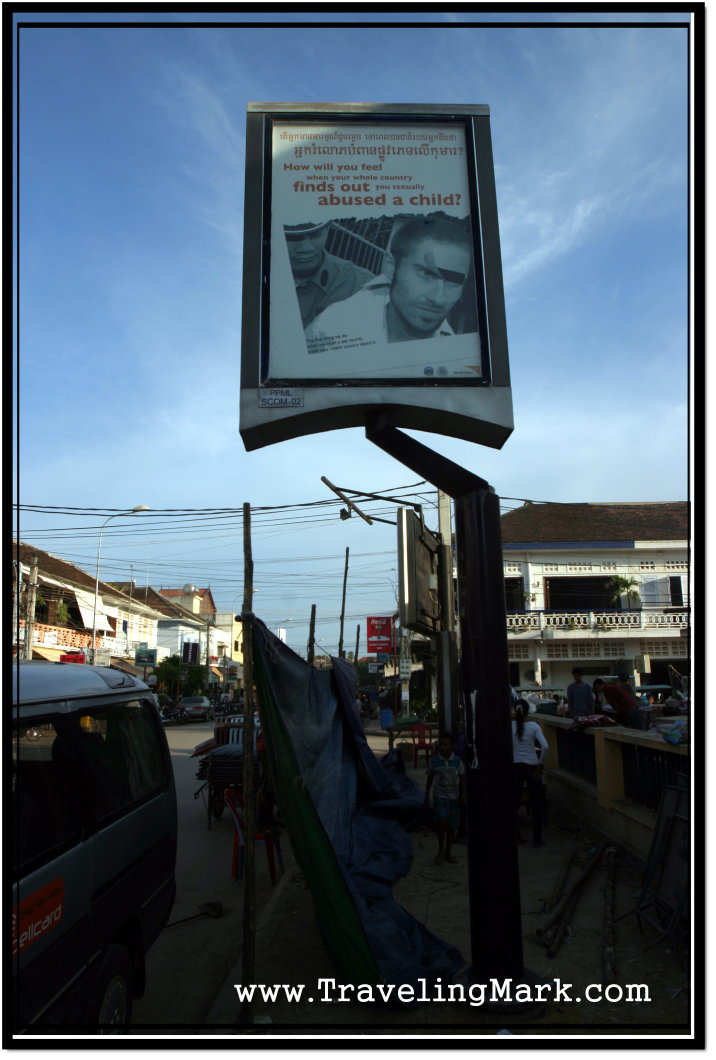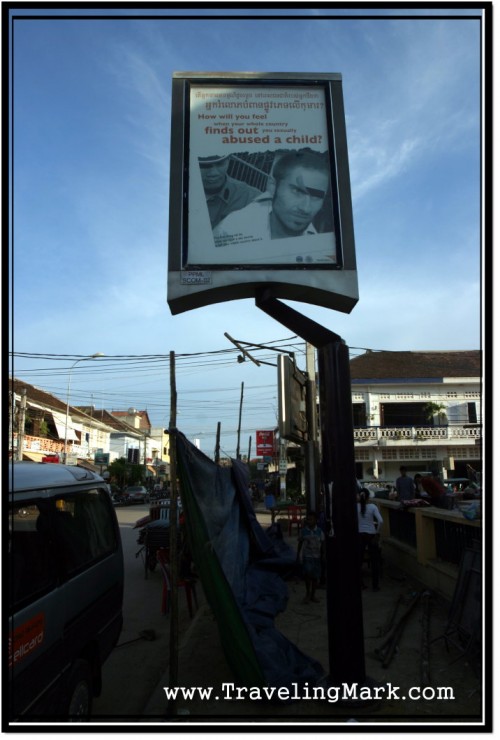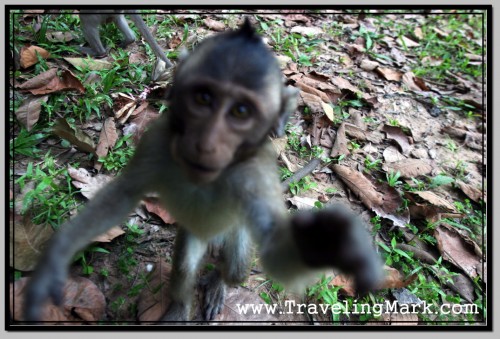Banteay Kdei was the first bigger temple I stopped at during my second day at Angkor but I was already heat-exhausted. Previous two stops at Prasat Kravan and Bat Chum were very brief and Banteay Kdei itself was much smaller than Angkor Wat or Bayon I visited the day prior so there was no real reason to feel tired but the intensity of Cambodian sun is not to be taken lightly. Sweat was oozing out of every pore on my skin turning the clothes I was wearing into a mush of grease.
If I were to continue riding bicycle and exploring more temples in this heat, I needed a break to recharge. I really needed a gush of cooling breeze but since that doesn’t exist at Angkor, I had to make do with the shade of a large tree. And once I got my breath back and stopped dripping like a broken faucet, I was gonna buy a coconut. Or two.
Like all other bigger temples of Angkor, Banteay Kdei is also overrun with aggressive, in-your-face touts and pestering children who won’t leave your side. As if dealing with scorching heat was not enough of a challenge already, you are also forced to battle off these relentless hustlers. There is no escaping them. You’ll waste a lot of energy shaking one off and just as you’re ready to breathe the fresh air having gotten yourself rid of it, a new half a dozen jump down your back and you’re back to ground zero.
The entire Angkor experience is greatly bastardized by touts who won’t leave you alone for one second. You can’t stop for a moment to take a picture cause it will give them time to encircle you so you have no way to escape their clutch. You can’t take a look to the left or to the right cause there will be a groups of them there who will instantly take advantage of an eye contact you have made and will treat it as an invitation to hustle you into buying worthless junk from them.
As I was exploring Banteay Kdei, I could not wait to get out of the temple grounds cause there were just too many touts inside and they were just too aggressive. I walked hastily towards the exit hoping to find salvation behind that giant gate with four smiling faces on top. But as soon as I made it through, I was jumped by a whole host of fresh touts who were awaiting just outside. Imagine the level of frustration this puts you through.
It was like: “You got to be kidding me! You are trying to sell me the same junk the touts inside had. If I had any intention to buy any of it, I would have bought it from the touts who harassed me inside. Hack, I could have bought it from the dozens of those at Prasat Kravan where I was earlier. Better yet, I could have bought it from the thousands of them super aggressive pests I had to deal with the day prior while I was at the most famous of all temples.”
Don’t these people get it? Everyone inside was bothering me with the same pirated books. What makes them think I would have gone through great lengths to not buy any from the touts inside only to change my mind now that I stepped outside? Regardless, they got right in my face and started with their mental torture, bashing at me from every angle I could turn to. It was absolutely horrible which only added to an overall feeling of being entirely heat-exhausted.
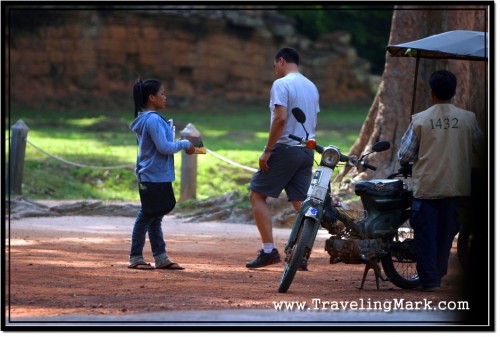
Abused or not, I could not go on. I needed a break, a coconut and a new bottle of water to take with me. I asked the girls if it was possible to hide in a shade of that large tree to the side of the entrance, where they all had plastic chairs full of extra pirated books just in case they’re having a good day and start running out.
Pausing right in the middle of the viper’s nest came with its repercussions – obviously. While it’s normally only about half a dozen of touts you have on your back at any given time, by pausing within their operation ground I had a whole host of them outscreaming one another in desperate attempts to trick me into buying something from them. It was beyond ridiculous but I needed a break regardless. I was too sweaty to go on.
The life didn’t stop with me being there, though. It was interesting to see how quickly their focus changes. While they all were on me because I was paused in their territory, when a new tuk tuk pulled in, their attention immediately shifted towards their new prey. And from the shade of the tree, I silently watched those other tourists desperately trying to shake them off, and just shook my head at how it was yielding zero results. I heard them all swearing in disbelief, trying to explain to the touts that they don’t need any of their worthless junk but it was all in vein. Visibly devastated by this ongoing abuse, the foreigners had to take it all in disgust.
Because Angkor touts seem to have territorial agreements between one another, entering a new territory means the end of abuse from one group, and the beginning of abuse from another. So when new tourists I saw coming escaped the grip of the touts operating in front of Banteai Kdei by entering the temple, they exposed themselves to the touts inside and the focus of the touts outside, which got temporarily shifted away from me was once again redirected back to me.
This pattern kept repeating with each new tourist (or a group of tourists) that made a stop at Banteay Kdei. Each time someone new came, they all went running to encircle them and when they walked inside the temple (aka outside their territory), they came back to me as even though I was just resting, I was still a foreigner and that translates to endless attempts to sell me something.
An interesting thing happened, though. After a good while and numerous attempts to make money at me, some of the girls eventually eased up on hustling and started to talk to me like friends. We talked about the country I came from as well as the country I was in, we talked about the way relationships work in Cambodia, about life in the village they were from, as well as a bunch of regular whinery Cambodians seem to be professionals at – how poor they are and how difficult it is for them to survive.
This was interesting because this whinery lands them with a lot of free stuff. The poorer they make themselves look in the eyes of dozens of foreigners they came in touch with every day, the more they get from them in donations and sponsorships. The girls I met had their English classes, their motorcycles, their expensive clothes – so many things paid for by people they abused during the course of their “duty”. They are used to getting handouts so an alternative is not an attractive option for them. The alternative, of course, is to invest time and effort into studying so as to acquire a skill that could land them a job and a career. But that requires hard work, dedication, sacrifice and in the end puts you in a position of having to go to work and deliver results as per your employer’s requirements. Then they would be able to buy their own motorcycle, their own clothes and pay for their own further education. But who can be bothered to do that. It’s much easier to just get in front of the temple and whine about how poor we are and be handed that out for free. So they do precisely that. And foolish foreigners, who have not been lucky enough to have someone pay for their education, go to work every day and dedicate the best days of their lives to earning money in the sweat of their own brow, end up falling for the trick and the handouts keep pouring in. Thus the culture of handouts gets enrooted deeply in the minds of the people who don’t even try to improve their own lives. But let’s get back to me making friends with the villagers.
I was definitely more heat-exhausted than I would have liked to admit so I spend good one and a half hour chatting away with those new found friends. Three of the girls in their early twenties were particularly nice to chat with as they were the only ones operating outside of the temples that were old enough to eventually get the fact that I’m simply just resting before the rest of my journey and am not buying anything other than coconuts and water.
Most of the touts harassing tourists are children deployed by their parents, though. It’s a perfect case of child slavery where parents are the masters. Instead of going to school, children are forced into spending their whole days at the temples to abuse foreigners because it’s easier for a child to pull off fake tears with lies to land some cash. These children are taught basic phrases that are proven to work the best. They often involve open lies, such as that they have no parents and need money for school, none of which is true. The “where are you from?” response to being told “No” is also a common phrase these children are taught.
Other than that, most of these children are too young to understand the foreign language well enough to get it when you’re trying to explain why you can’t buy anything from them. So they will just follow you around while continuously mumbling their memorized chants and you’ll have absolutely nothing to work with to get them off your side.
It was a little better with Saly, Sarein and Sokai (or Kai for short) who were past their twenties and spoke better English. After they’d failed to sell me their books the tenth time and after I’d repeatedly made myself clear about being unable to buy anything from them, they eventually stopped harassing me and only came over for a chat. They took off each time a new tourist showed up, but after the tourists entered other tout’s territory and there was nobody else to harass, they came to me to talk. It’s a long day they have at the temple (they start at dawn, which is often before 6am and “work” until dusk, which is at around 6pm) so killing time while they’re waiting for their next prey with someone new helped them get through the day faster.
This break I took eventually turned out being quite an interesting experience. I made new friends with those three girls and ended up spending almost every day of the rest of my stay in Cambodia with them. Saly and Sarein lived in the village on the south bank of Sras Srang, opposite Bantey Kdei temple, while Kai lived with her mother in the village along the road lining the northern bank. Child slaves never actually stopped bothering me, not even after months of coming there day in, day out, but this was definitely the most authentic Cambodian experience I could have asked for.
